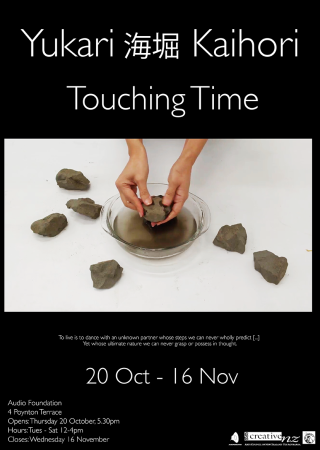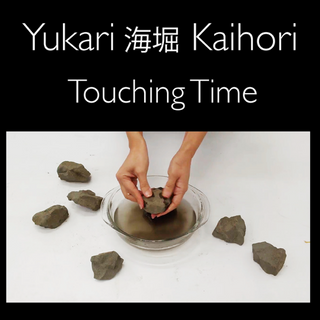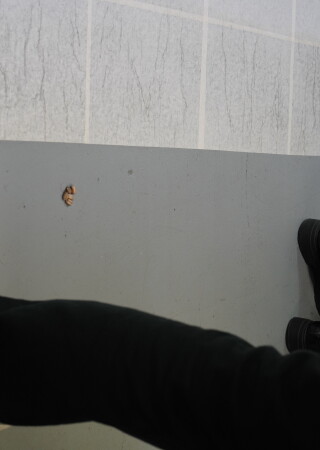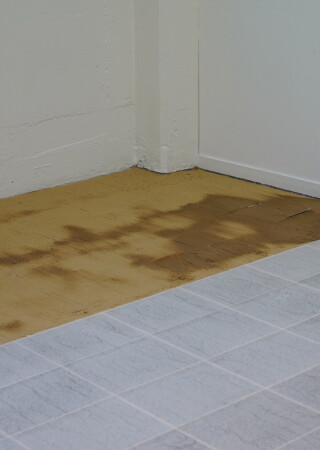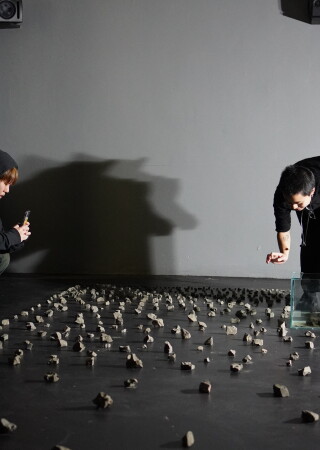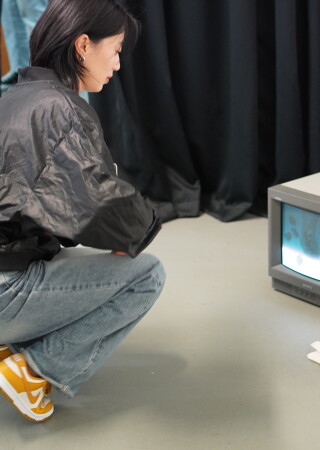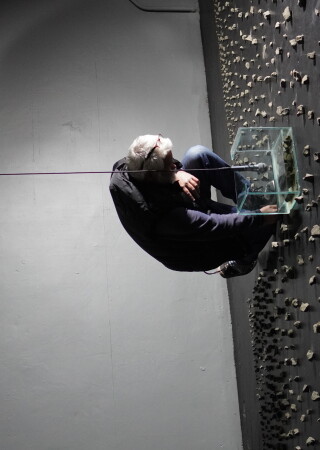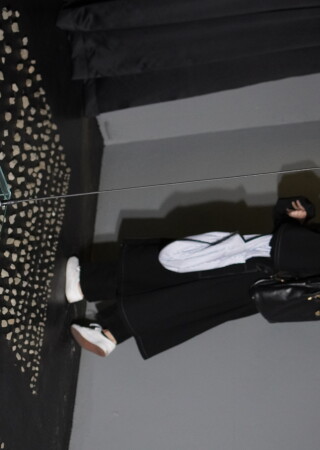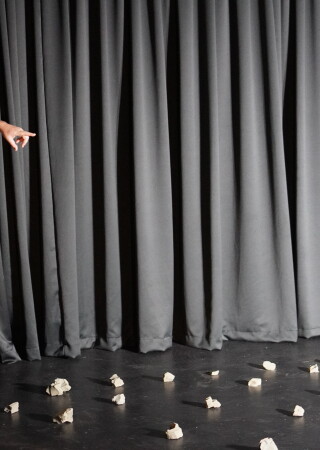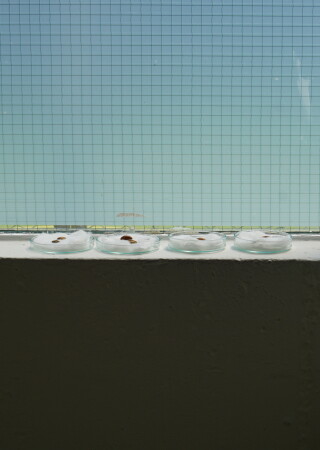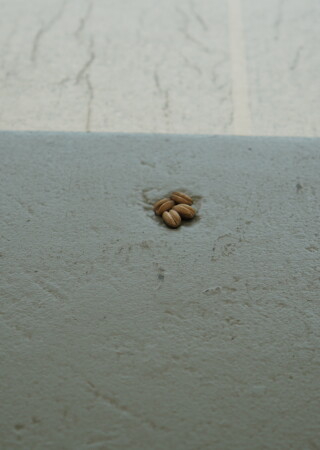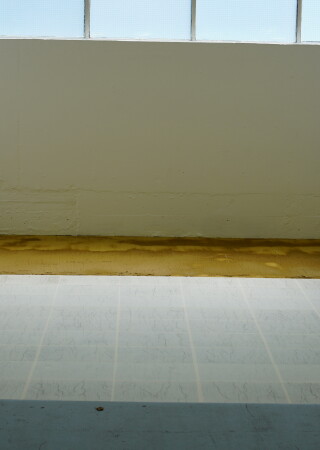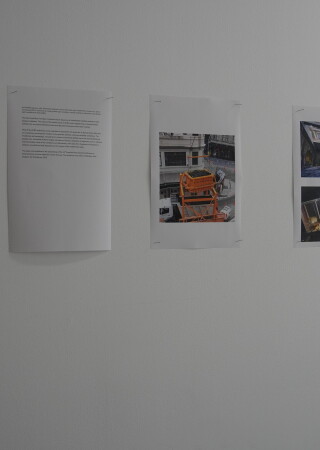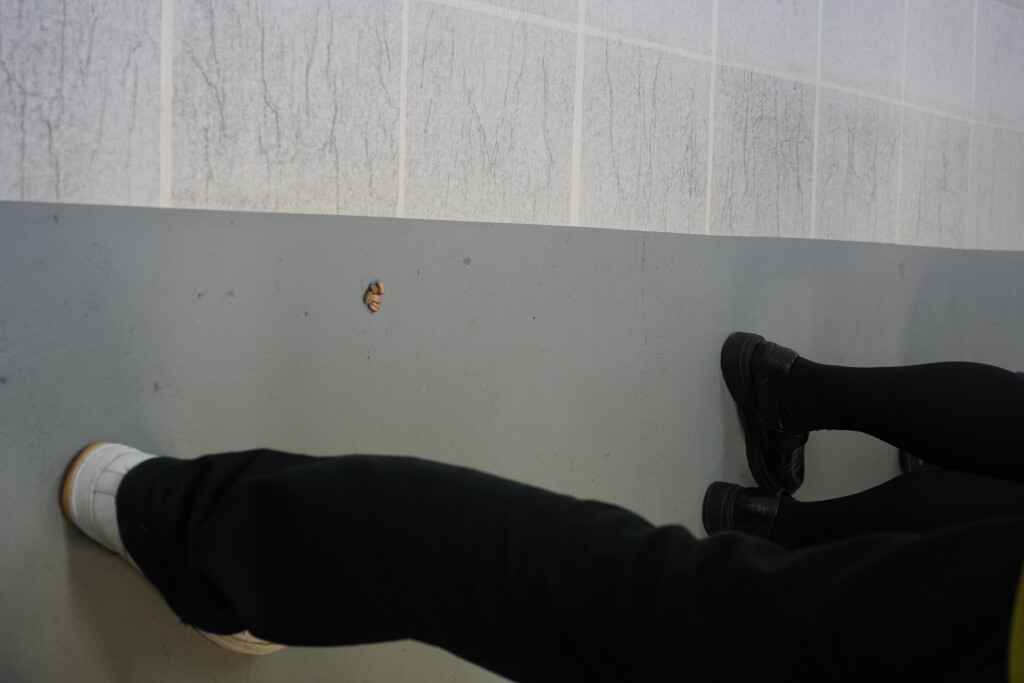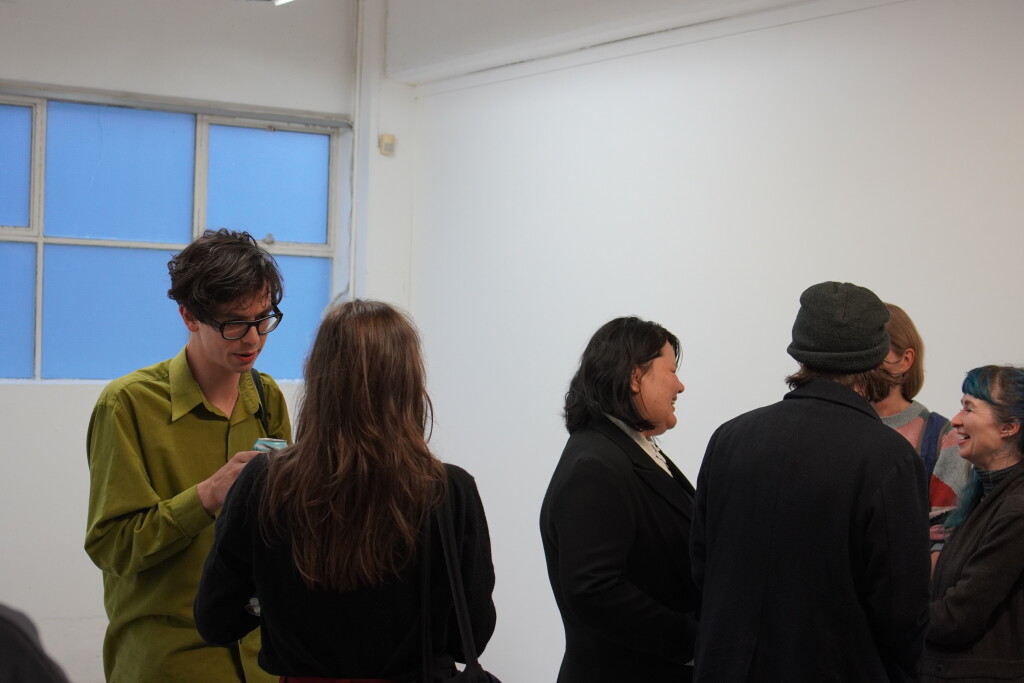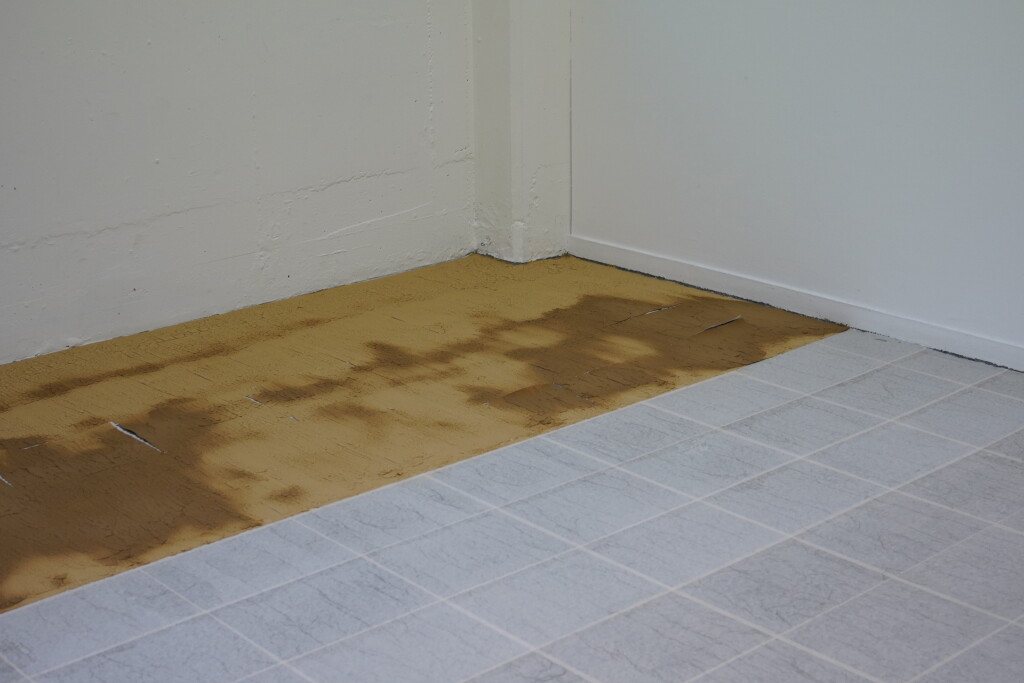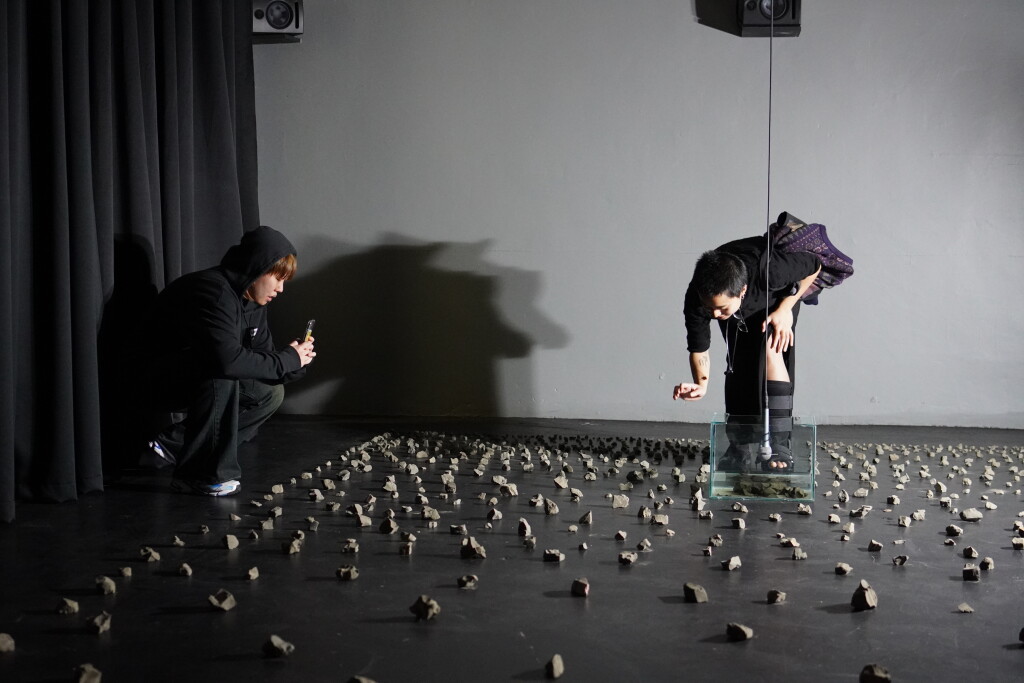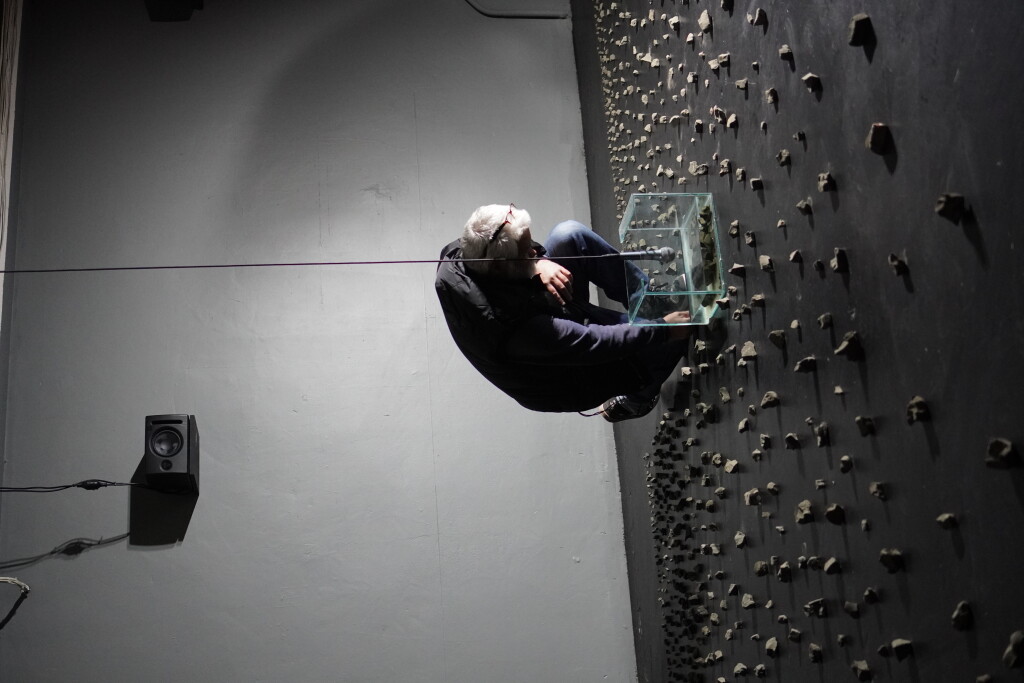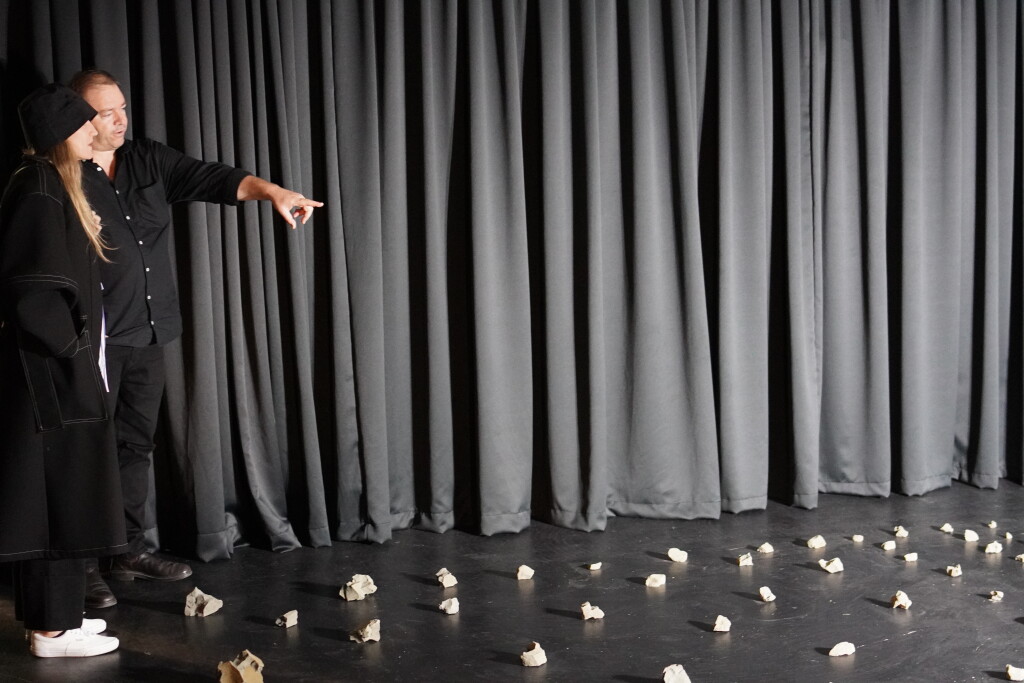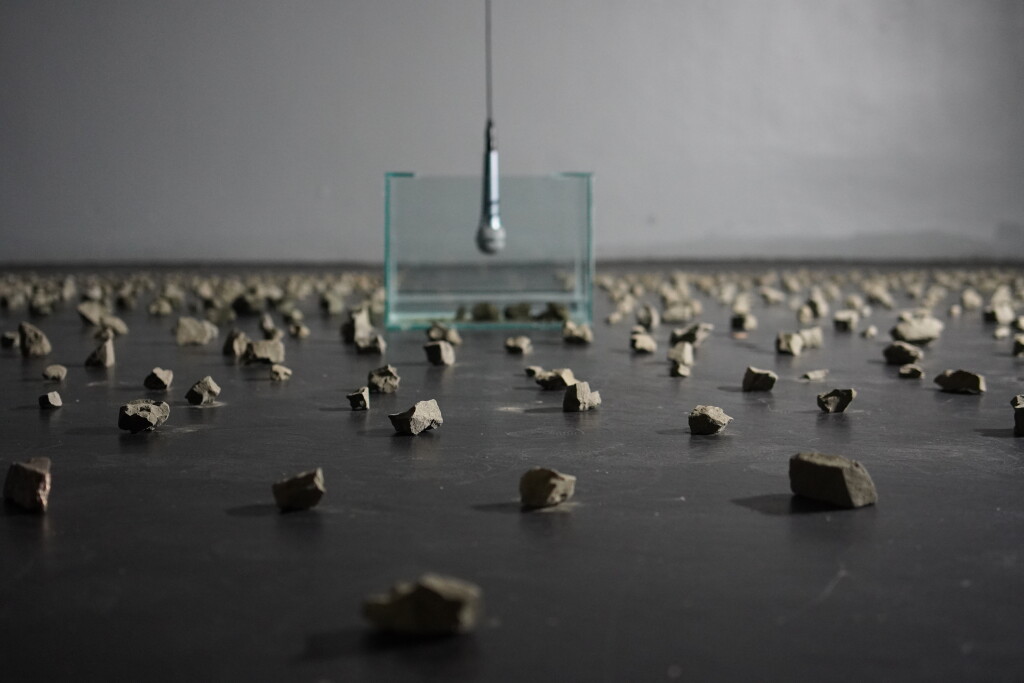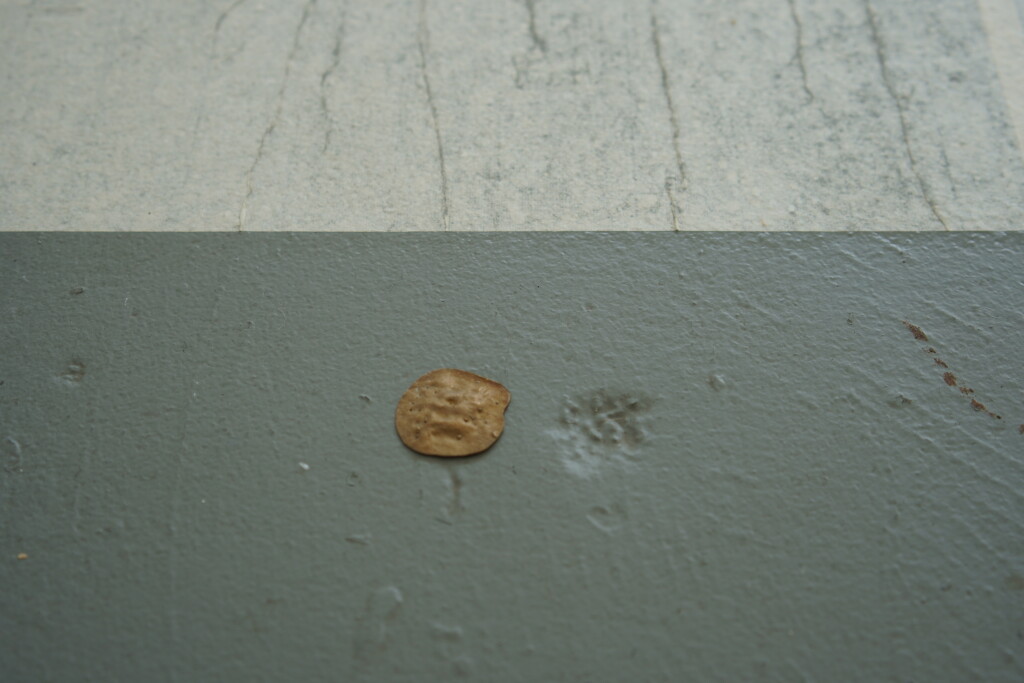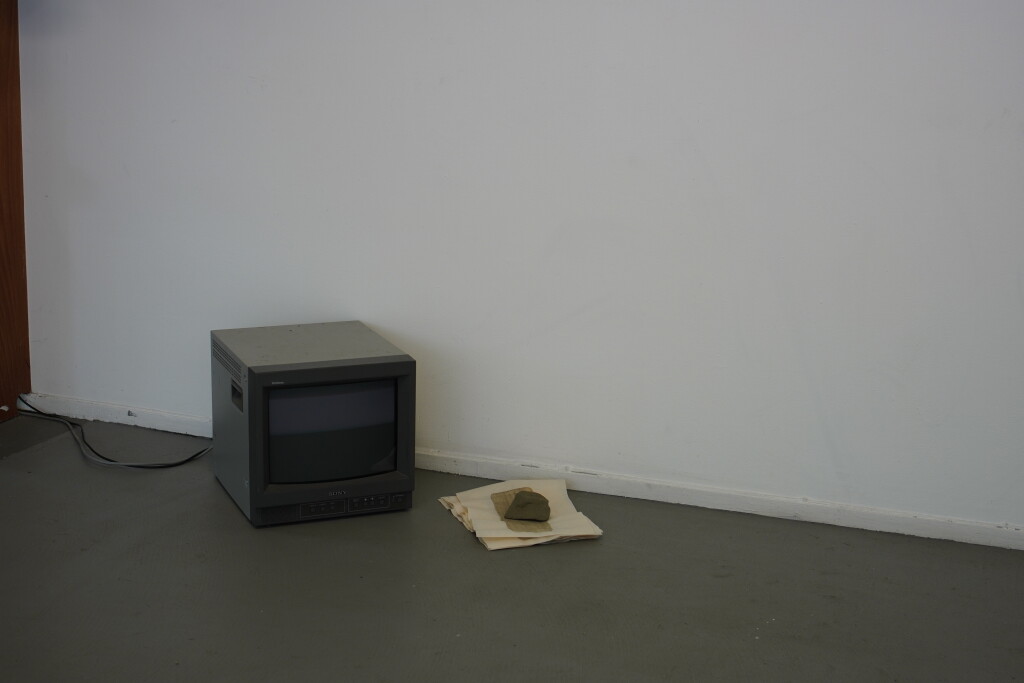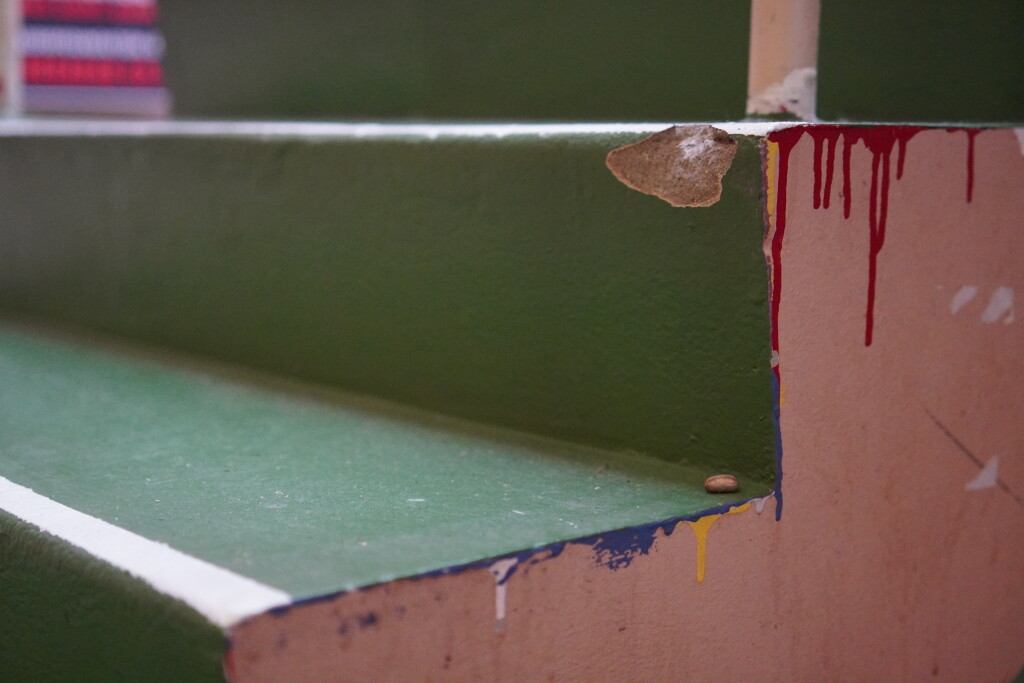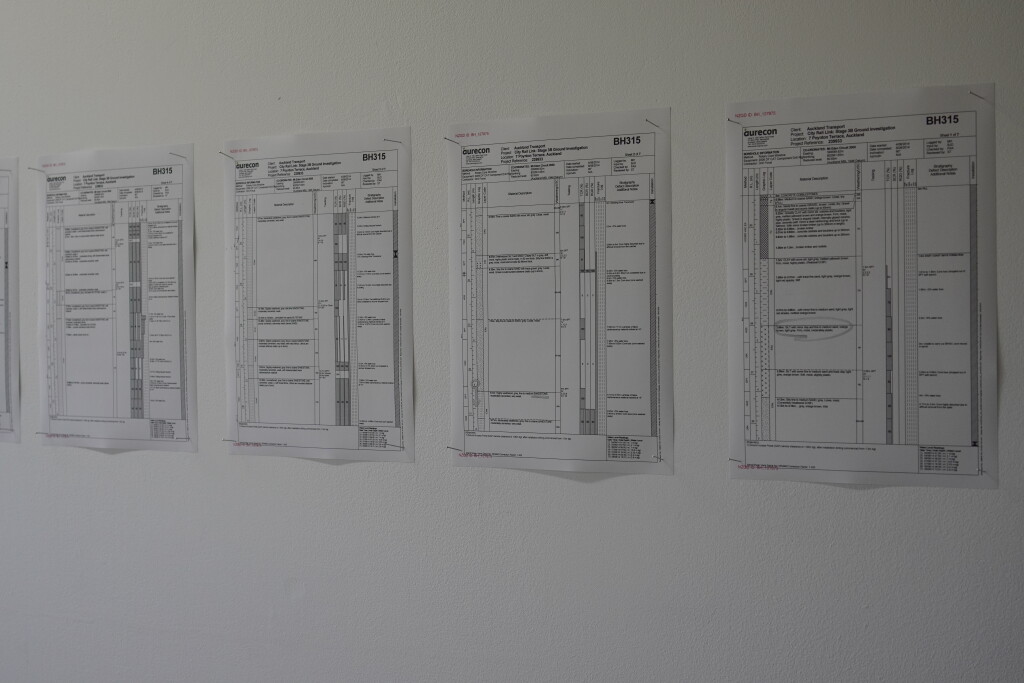Please join us to mark the opening of Touching Time by Yukari Kaihori.
To live is to dance with an unknown partner whose steps we can never wholly predict […] Yet whose ultimate nature we can never grasp or possess in thought. (Paraphrased from David Abram)1
The idea of paying attention to immediacy, the everyday ecology of things we might otherwise not notice, has been the focus of my work for the last few years. I have always liked the ambiance of the Audio Foundation site. Walking down the stairs into a dark space, it feels like it is leading somewhere else. Once you reach the office space, lights come through, and you can see Phoenix palms in Myers Park. After walking around inside and outside Audio Foundation several times, I contacted the City Link construction site for CRL at Beresford Square across the street. At the beginning of 2022, they were working about 26m beneath ground level. The underground, beneath the footing on which we lead our lives, places we do not pay attention to, the invisible.
According to the ground investigation and borehole information, the stones are found between 9m to 30m deep. 9m – which is roughly the depth we are at when standing in the rear part of the gallery. With the support of the University of Auckland Environmental Department lectures, they have confirmed the material as being 17-21 million year old sandstone belonging to the East Coast Bay formation. It is a sedimentary rock composed primarily of quartz sand, an ordinary sedimentary matter. The clay applied in the second room is also from the East Coast Bay formation, found 1m to 3m below the ground.
Sandstone breaks easily in my hands, undoing the time it took to form in seconds. We live with many invisibles, from bacteria in our guts and microplastics in our rivers, to the roots of street trees growing under the ground.2
Here is an invitation to become more aware, to tune in to and feel the exquisite qualities of the immediate ecology and environment around us.
Opens: Thursday 20 October, 5.30pm with refreshments provided by Liberty Brewing Company
Hours: 12 – 4pm, Tuesday – Saturday
Closes: Wednesday 16 November
ARTIST BIOGRAPHY
Yukari 海堀 Kaihori is currently based in Tāmaki Makaurau working on her Doctoral degree at Elam School of Fine Arts, The University of Auckland. Her work concerns ideas of the more-than-human-world and the immediacy of mundane places. Recent exhibitions include The Moon and the Pavement Physics Room curated show at Ashburton Gallery, Hakatere, The Quiet Place I Search For: In situ (ɪn ˈsɪtju /室/ Shitsu しつ) at Meanwhile, Te Whanganui-a-Tara in 2022, In Searching for Deities at RM Gallery, and After Nature, Follow Where the Rain Goes at Elam School of Fine Arts, both in Tāmaki Makaurau 2021.
*Material used in this exhibition will be returned to the site sustainability team and they will process them accordingly.
1. Abram, David. “The invisibles: toward a phenomenology of the spirits.” Essay. In The Handbook of Contemporary Animism, 124–34. London: Routledge, 2015, 124.
2. Carrington, Damian. “Microplastics Found in Human Blood for First Time.” The Guardian. Guardian News and Media, March 24, 2022. https://www.theguardian.com/environment/2022/mar/24/microplastics-found-in-human-blood-for-first-time.



